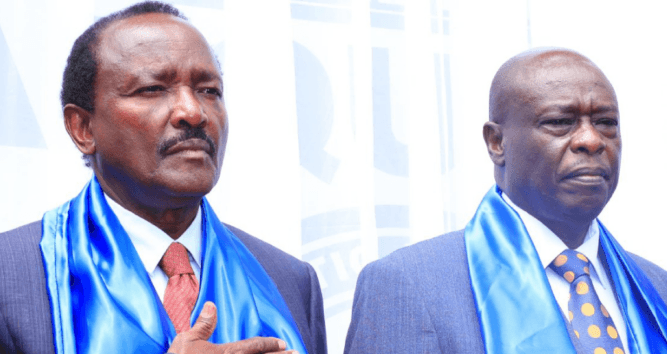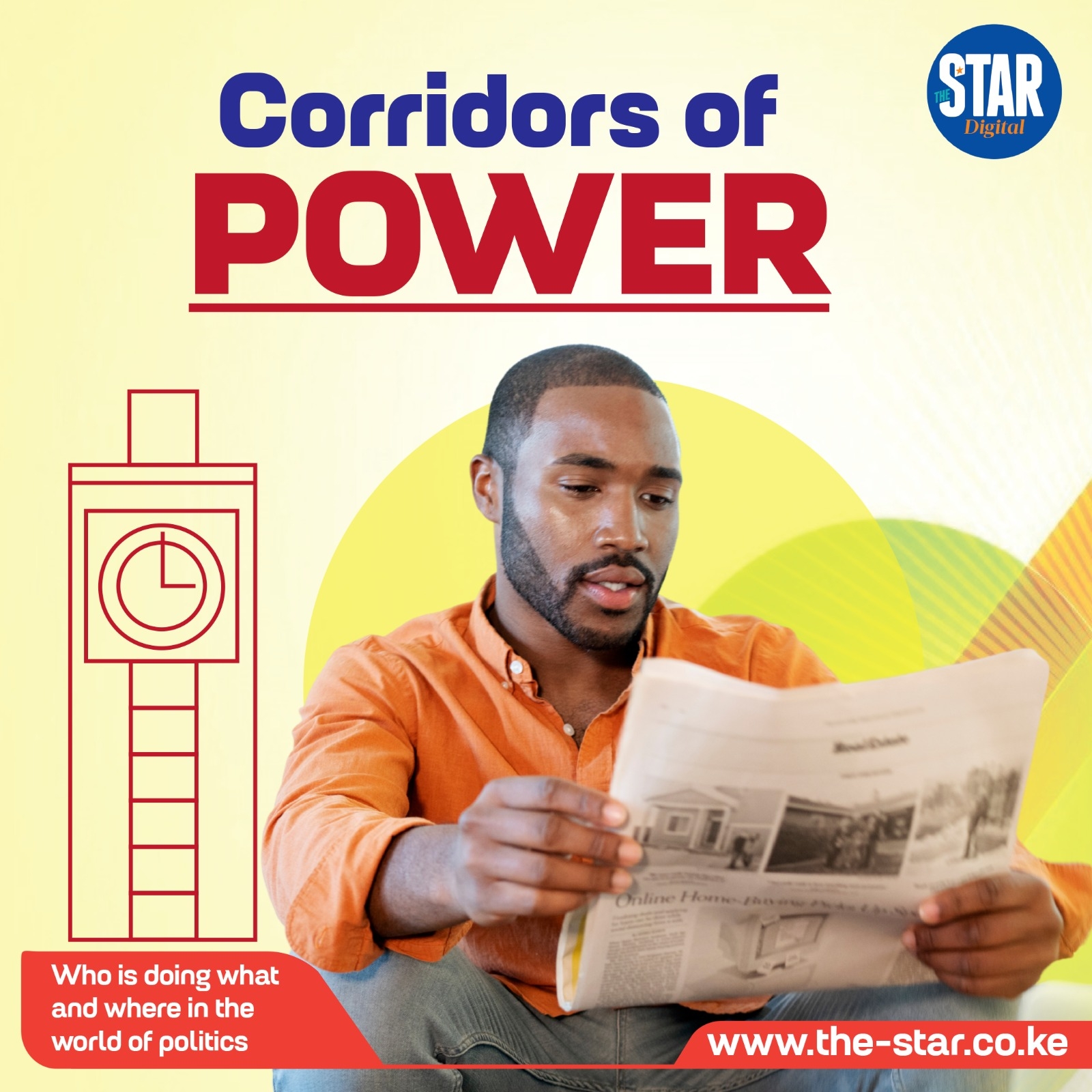There was no chance of a woman president emerging from this election and it seems we shall not be having a woman Deputy President either.
The Constitution says nothing explicit about those positions, but it does of course say (Article 27(8)), “The State shall take legislative and other measures to implement the principle that not more than two-thirds of the members of elective … bodies shall be of the same gender.”
The failure of the state to take legislative measures to ensure elected bodies meet this standard (or principle) has been one of the disappointments of the last 12 years – since the Constitution was adopted.
It is not necessary to go into that sad story. Here I just want to ask “What has been the impact of the recently concluded election on the make-up of elected bodies”?
The governorship elections are encouraging. Yes, seven women governors hardly constitute a revolution. But in 2017 only three women were elected governor. In 2013, none. There are no women candidates in the postponed elections for governor.
THE SENATE
I have several times written something like: “If two more women are elected as county Senators than in 2017, the Senate will have satisfied the constitutional principle”.
In 2017, three women were elected as senators for the counties - only 6.4 per cent of the senators. But including 18 list or “nominated” senators (two for special interests and 16 to present women generally) there have been 21 women in the Senate or 31.3 per cent of the total.
But in 2022 again only three women have been elected senators (for Isiolo, Machakos,and Nakuru). And no senator elections have been postponed. So the Senate will again have 31.3 per cent women.
NATIONAL ASSEMBLY
This is the most important in some ways — as the national body and the one that deals with all legislation (while the Senate has a legislative role only on laws affecting counties).
The National Assembly has 349 members. These are 290 for traditional style constituencies, plus 47 women county representatives (each elected by all a county’s voters), and 12 list members — to represent “special interests” which include youth, persons with disabilities and workers.
In the most recent Parliament, five of those 12 were women. And it is likely that generally, there will be five, six or seven women in that category of MPs.
That recent National Assembly had 23 women elected for the first type of constituency. With the two other categories there were 75 women overall or 21.5 per cent.
One of the disappointing results of the constitutional design on this topic has been the apparent tendency of men — at least those with influence in parties — to think “well, women have their own seats (meaning the 47 county women seats) we need not make particular efforts to include them as candidates in constituencies.”
Even in 2007 — that is under the old Constitution — 7.27 pert cent of constituencies were represented by women. So the 7.9 per cent of the general constituencies won by women in 2017 was little improvement. There is also the factor that many women seem to prefer standing for county women seats, rather than compete with men in the regular constituencies.
While an important object is to get women actually in Parliament, my personal feeling is that it is much better if those women are there on equal terms with men – having competed with men in the elections, and performing the same tasks as male members. They then should have the same respect as the men.
So I was pleased to see that in 2022, 27 women have been elected for constituencies – or 10.9 per cent. When the 47 women county members are added, and, let us assume five list members, there will be 79 women in the House. This would be 22.6 per cent of the total. (Four elections have been postponed but no woman is standing in any of them).The absolute maximum would be 81 women if seven of the list members were women. This would be 23.2 per cent.
There is still a long way to go to reach the elusive one-third. This would require that women are elected for 65 of the 290 constituencies – more than twice as many as now.
COUNTY ASSEMBLIES
County assemblies have a built-in guarantee of no more than two thirds of either gender. Enough women will be added to any assembly that has not achieved at least one third women. In 2017 none had done so.
In Nandi, five ward seats were taken by women—only 16.7 per cent, but far better than the national average. Supposedly sophisticated Nairobi had only five women out of 85 ward members (5.9 per cent).
Following the 2017 elections there were overall 96 women ward members. Final 2022 results for county assemblies were not readily available at the time of writing.
In some counties, it seems that fewer women MCAs were elected than in the past. In Nyamira county, a woman MCA who had held a ward seat in 2013 and 2017 failed to get re-elected. There are thus no women ward members in that county. And Nairobi has now only four women ward members or 4.7 per cent.
This is a depressing situation – but of course is only a few snippets of the whole picture.
But if other counties do not do better, what may be the explanation?
It will vary from woman to woman of course. Some have moved on to other roles. Competition for MCA seats may be getting tougher as people realise the possibilities of that role. And tougher will be harder than ever for women.
The top-up list system may be even more prone than the county women representative system in the National Assembly to discourage parties from nominating women for ward/constituency races. If so – does that perhaps throw some doubt on the idea that the “solution” to the overall gender question is to extend the gender top-up system from counties to Parliament?
INDEPENDENT WOMEN MEMBERS
In 2017, a young woman was elected a ward MCA as an independent. This year, she was elected to Parliament (for UDA). A handful of women stood for Parliament as independents. None was elected, though nine independent men were.
One woman was elected governor [Meru] as an independent. While one might think that this route enables a woman to vie free from the constraints of party, it may be that being an independent candidate is tougher for women than for men. They may be viewed as odd, uncooperative, and selfish.
WHAT NEXT?
There is a court order that political parties must respect the two thirds rule, which can only mean they must not have more than two-thirds of their constituency or ward candidates of the same gender. This will come back to court, if they did not. So will the whole question of the failure of Parliament to carry out the Supreme Court’s order (originally the court’s deadline was 2015).
A lot of detailed research needs to be done (though a good deal has already been done). Do we fully understand why there are not more successful women in politics – beyond the rhetoric about a patriarchal society, fears of violence, money concerns and so on? How do some women repeatedly get elected? Or move from one political role to another, building on past experience?
Did parties in fact put forward at least one third women? And if so, how many were in the constituencies that the party had a real expectation of winning?
In how many constituencies did voters have a chance to vote for a woman? Certainly, in some parts of the country there was no woman candidate in at least half of the National Assembly constituencies.
This has proved one of the most difficult aspects of the Constitution to implement. In fact in most countries that have a system using only or mostly single member geographical constituencies the issue is tough.
In the US just over 25 per cent, in Canada 30.5 per cent, and in the UK 35 per cent of their main Houses are women – all recently achieved records.












![[PHOTOS] Ruto launches Rironi-Mau Summit road](/_next/image?url=https%3A%2F%2Fcdn.radioafrica.digital%2Fimage%2F2025%2F11%2F6f6601a6-9bec-4bfc-932e-635b7982daf2.jpg&w=3840&q=100)


